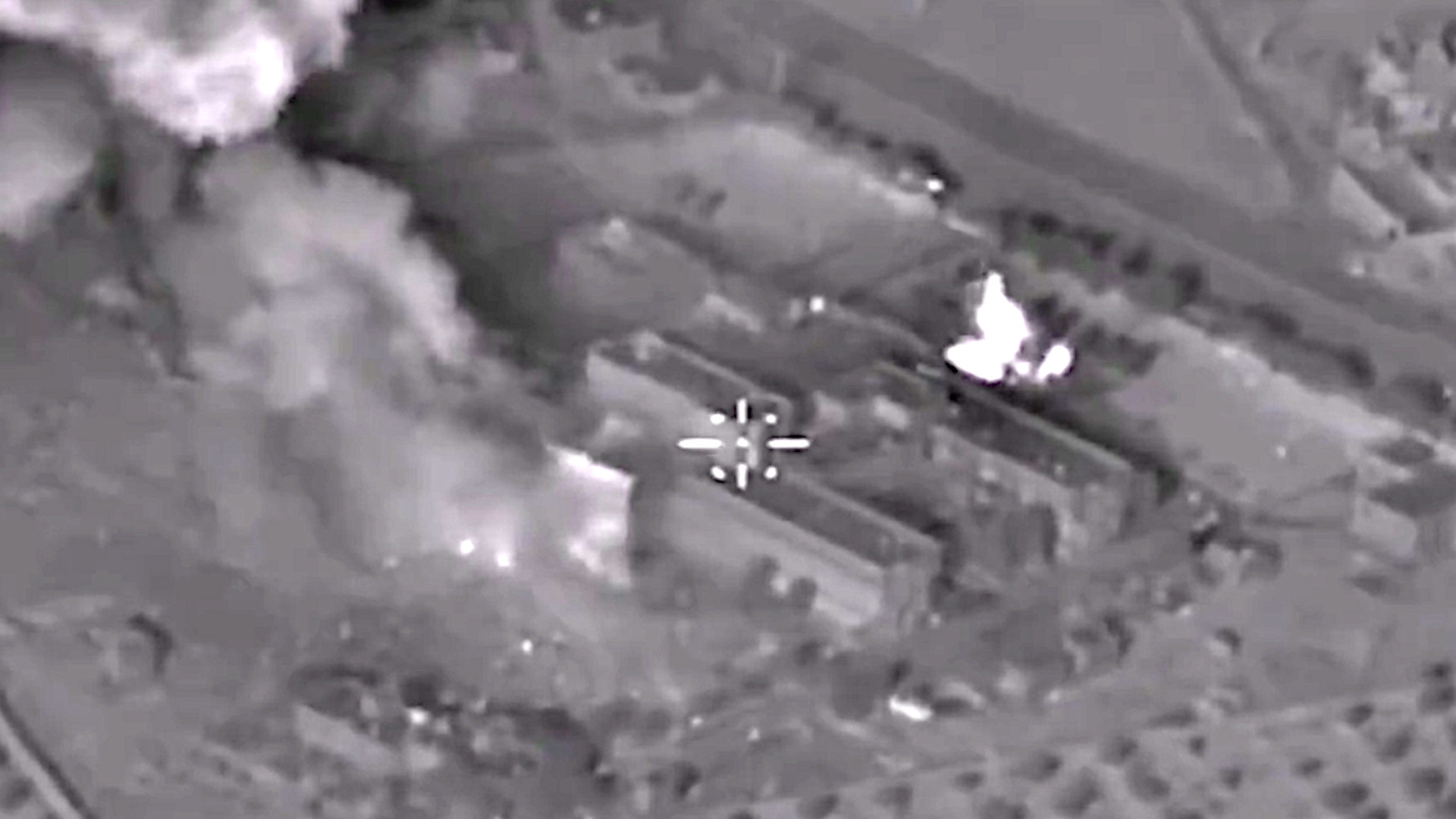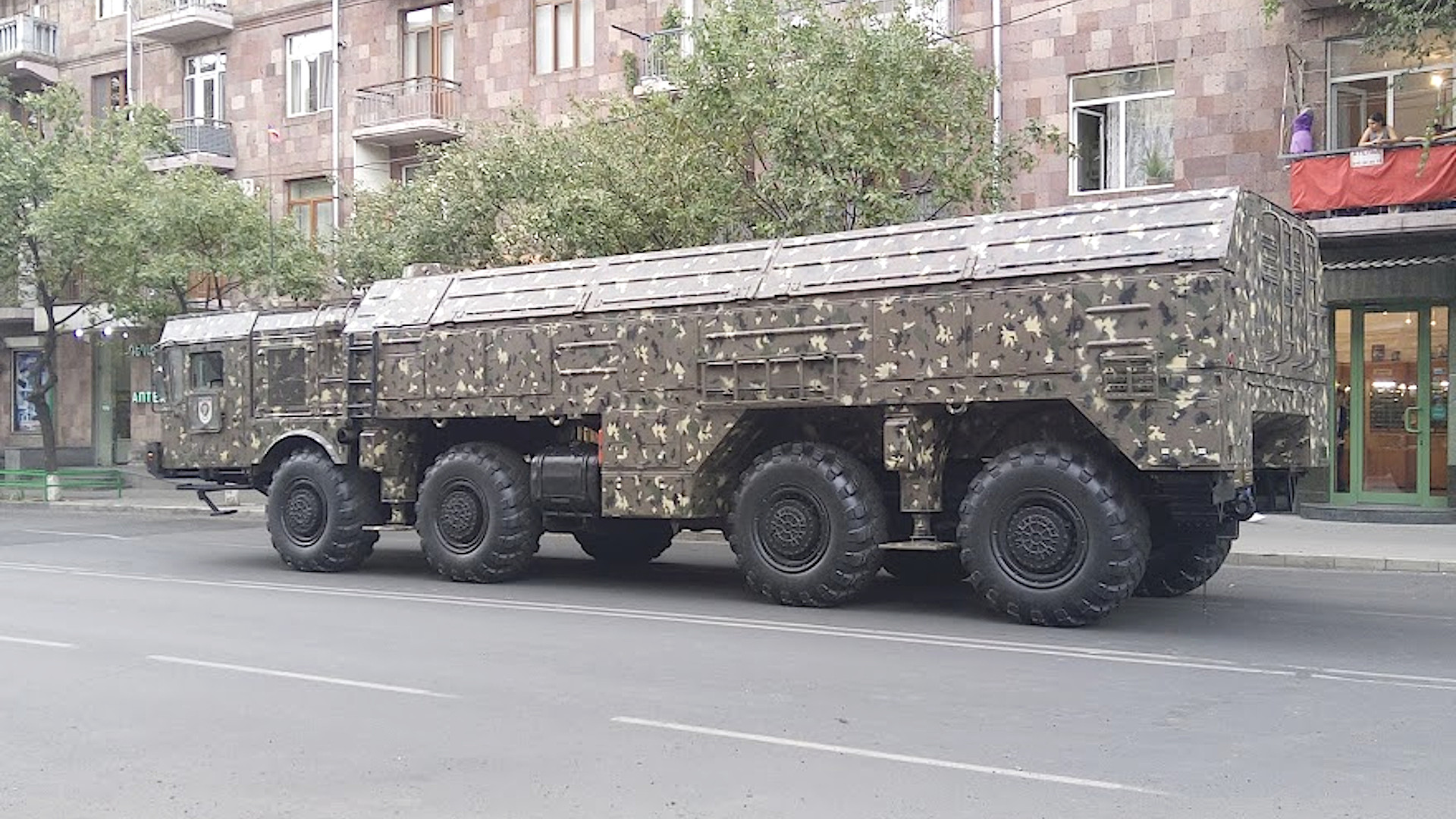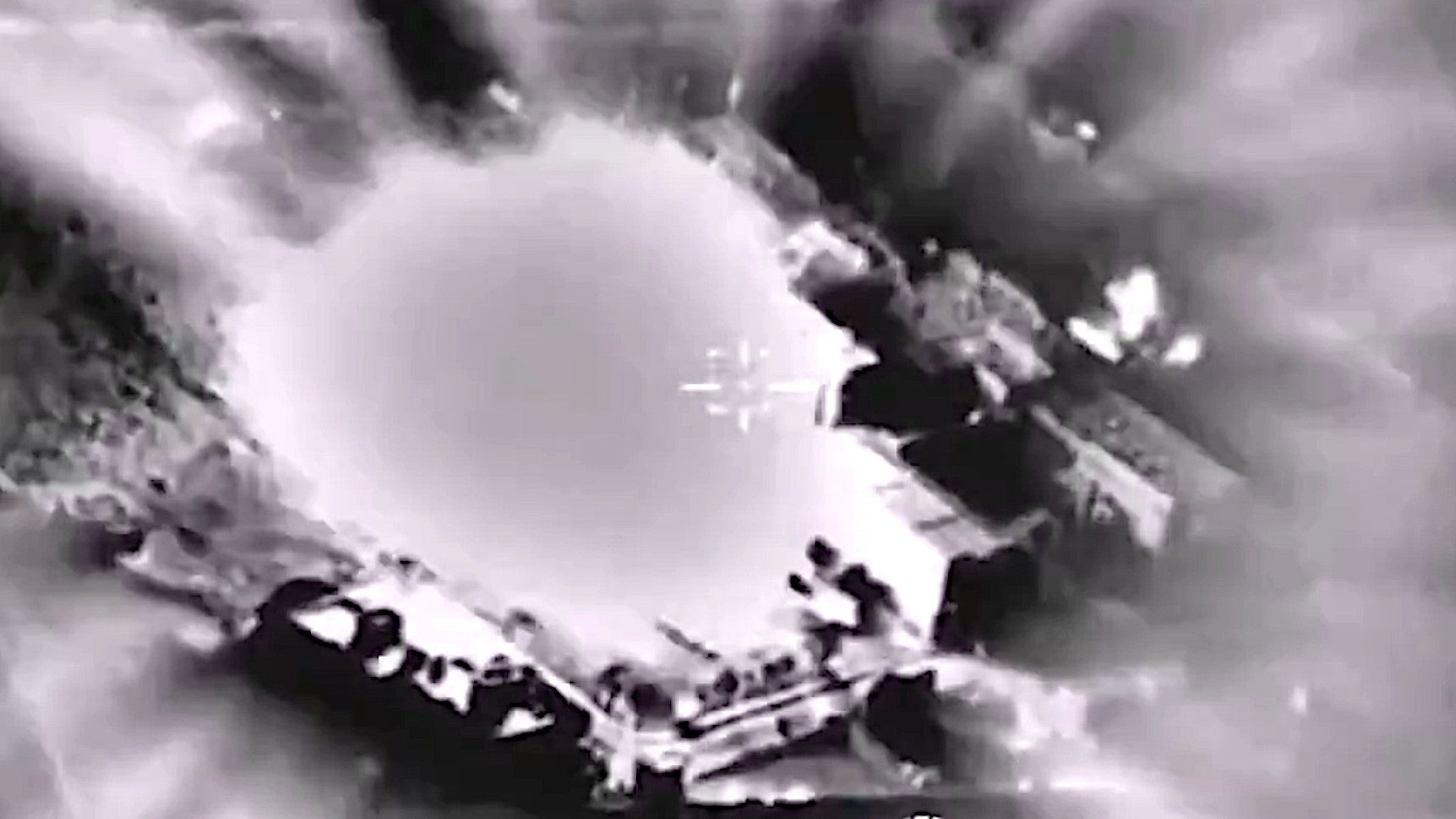The Russian Ministry of Defense released a montage of video footage yesterday that it said showed successful strikes in Syria using both the ballistic and ground-launched cruise missile versions of the Iskander system. This was in response to criticism from Armenian Prime Minister Nikol Pashinyan about the performance of his country’s Iskander-E ballistic missiles during the conflict with Azerbaijan last year. However, one of the clips appears to have inadvertently confirmed an old allegation that short-range ballistic missiles had been used to deliberately target a hospital in Syria in 2016.
The footage, different portions of which various Russian state media outlets aired, is simply described as showing “Iskander” use in Syria. It includes clips of launches of the Iskander-K ground-based cruise missile, which is completely different in form and function from the Iskander-E and M short-range ballistic missiles. However, all of these weapons can be fired from the same transporter-erector-launchers.

The particular montage that RIA Novosti put out, seen in the Tweet below, included what looks to be footage of a deliberate strike on a hospital in the Syrian city of Azaz near the Turkish border. The building that is struck has the same H-shaped configuration as the Azaz National Hospital, and there other unique indicators, such as the main building’s position relative to an adjacent road and the specific location of smaller separate structure within the same compound, are clearly visible. These details leave little ambiguity as to what facility is being shown.
The video also looks to have been shot via an infrared camera on an aircraft, possibly a Russian drone, observing the target. The sensor system’s crosshair reticle is aimed squarely at the building, leaving no doubt that it is the intended target.
All of the video clips are undated and the Russian Ministry of Defense provided no additional context itself. However, there were reports of missile strikes on the Azaz National Hospital, which were said to have killed 14 people and wounded many more, in February 2016. At that time, the Russian Ministry of Defense insinuated that these and other related allegations had been entirely fabricated by individuals in Turkey.
The hospital had also been targeted on other occasions between January and February 2016 and some local reports describe some of the attacks as airstrikes. All this makes it hard to say exactly when the strike seen in the footage the Russians released might have taken place.
As noted, this footage was only released after Armenian Prime Minister Pashinyan’s comments about the Iskander-E in an interview with the country’s 1in.am television channel on Feb. 23, 2021. He was responding to earlier criticism from former President Serzh Sargsyan about how the Russian-made ballistic missiles were employed in a brief war with Azerbaijan over the disputed Nagorno-Karabakh region that broke out in September 2020 and came to an end less than two months later.
Pashinyan said that the Iskander-Es had been used, but that they had been ineffective, claiming that the warheads in the majority of the missiles fired failed to explode as intended, if at all. He further suggested that the weapons, which Armenia first fielded in 2016, may have been past their shelf life, but provided no further details to substantiate this or any of his other comments.
Pashinyan has been under increasing political pressure, in general, since a Russian-brokered peace deal ended the fighting over Nagorno-Karabakh. Azerbaijan was the clear victor in the conflict and reclaimed significant portions of the disputed border region. The ceasefire agreement also included the establishment of a buffer zone that Russia’s own troops now patrol between the two countries. All of this immediately sparked protests in Armenia that almost toppled the government.
The embattled Prime Minister’s interview this week had also prompted a response from the Chief of the General Staff of the Armenian Armed Forces, Onik Gasparyan, on Feb. 25, that signed by 40 other senior officers. Pashinyan warned that the statement, which said that he and his administration “are no longer able to make proper decisions in this fateful moment of crisis for the Armenian people,” could be a prelude to a coup attempt.
As questionable as Pashinyan’s claims might be, Russia’s response was equally dubious. The Russian Ministry of Defense issued a statement that it was “bewildered and surprised” by the Armenian Prime Minister’s remarks and its chief spokesperson, Major General Igor Konashenkov, insisted there was “objective and credible” evidence that no Iskander-Es had been employed against Azerbaijan. This is despite the video evidence to the contrary and Armenia’s Chief of the General Staff Gasparyan also saying that the missiles had been used, even though he blamed Pashinyan for delaying their employment.

In an attempt to ram its points home, Russian authorities now appear to have fumbled in a completely different direction with the highlight reel of strikes in Syria. In addition, the Russian Ministry of Defense interestingly said that Iskander-Es had been employed in Syria, despite those being intended for export only.
This raises interesting questions, since Russia is not known to field the Iskander-E, which has a reduced range to comply with the Missile Technology Control Regime (MTCR), an international arms control pact. It is possible that Russia used the Syrian conflict as an opportunity to demonstrate the Iskander-E in actual combat, perhaps as a way to try to secure new export sales. Before now, it was believed that the 2020 war over Nagorno-Karabakh was been the combat debut of this version of the Iskander, which is only known to be in service with Armenia and Algeria. The Kremlin has certainly used Syria as a testing ground for a variety of different, often advanced weapon systems.
The Kremlin may have also sent Iskander-Es to Syria that are now nominally under the control of forces belonging to Syrian dictator Bashar Al Assad, who also has existing stockpiles of Soviet-era short-range ballistic missiles. There is also the potential that reference to Iskander-E is simply in error. Some experts and observers have even called into question whether any of the footage that the Russian Ministry of Defense released even shows anything beyond the use of the Iskander-K cruise missile.
Whatever the exact Iskander versions shown in the clips from Syria might be, the montage does add to the already very clear-cut evidence that Russia has carried out a deliberate campaign of airstrikes against hospitals, among other civilian targets, in areas under the control of Syrian rebels since at least 2017. The New York Times published a particularly detailed investigation into this matter, which included snippets from thousands of audio recordings that the newspaper had obtained of Russian pilots in Syria talking about carrying out such operations, in 2019.

A separate investigation that the United Nations released the following year directly accused Russia of being responsible for war crimes, the first time the international body had done so, in the course of fighting in the country.
However, this new video clip would indicate that the Kremlin had been conducting strikes of this kind earlier than had been previously known and using other assets beyond combat aircraft to carry them out. Russian forces first intervened in Syria’s civil conflict in 2015 and were seen, especially when it came to the influx of combat airpower, as instrumental in preventing the collapse of Assad’s regime.
No matter what, the footage that the Kremlin has now released itself is appears to be some of the clearest evidence to date that strikes on hospitals have indeed occurred deliberately.
Contact the author: joe@thedrive.com
